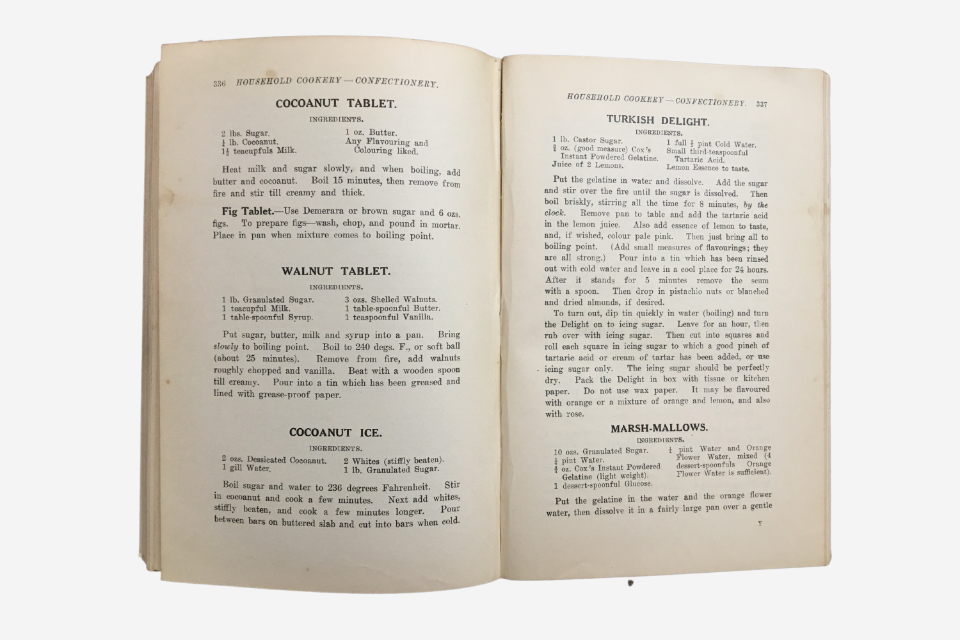Sweets and treats
This particular copy of the Glasgow Cookery Book is in relatively good condition and has few signs of wear and tear. The only noticeable signs of usage can be seen on pages in the section on confectionery recipes. Hence, it can be inferred that the original owners of this cookbook referred to it mostly for its recipes on sweets and similar treats.
Reflecting on this anecdote, my grandmother suggested to me that the recipes for sweets were the most popular, as rationing was widespread in the 1940s wartime and post-war period . People seldom bought pre-made sweets due to scarcity and steep prices. Making your own was a more practical thing to do, despite policies on sugar rationing.
This page showcases various recipes for tablet. Tablet is a traditional Scottish confectionery: it is akin to a soft fudge or toffee, its two main ingredients being sugar and milk, and it is served in small squares that most can only bear to eat one or two of because of its tooth-rotting, rich sweetness. It’s a food item synonymous with Scottish cuisine and is often sold to tourists. On a personal level, it’s something I grew up with and fondly relate to family Christmases and Hogmanay (New Years) celebrations.
The inclusion of recipes for something as nationally-loved and well-known such as tablet demonstrates another aspect of the cookbook’s influence: how the selection of certain dishes and items diffused and ‘standardized’ traditional Scots recipes across the country. The direct effects of this ‘standardization’ of incorporating certain dishes into daily life across the country have not been studied in-depth, so it is difficult to ascertain the extent of the role of this cookbook in developing Scottish culinary identity.
